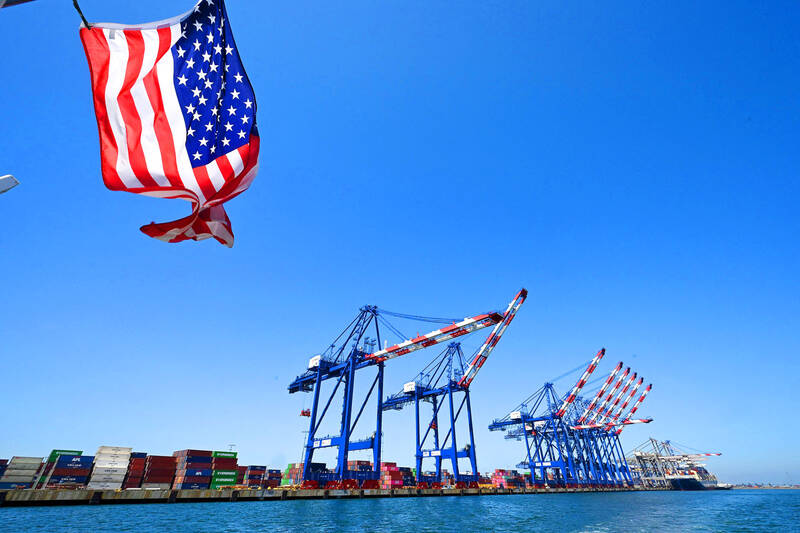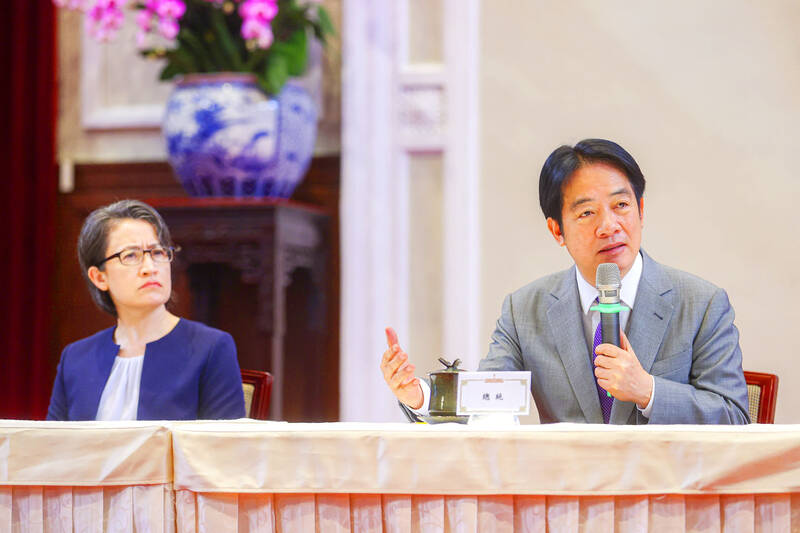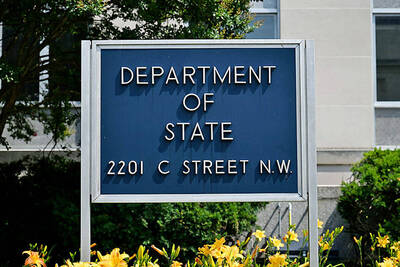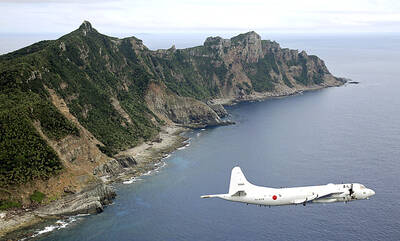The new 20 percent tariff rate the US set on goods from Taiwan is “temporary,” and the government expects to negotiate a lower figure, President William Lai (賴清德) said yesterday.
Tariff rates on semiconductors, electronics, and information and communications technology products are to be determined separately under forthcoming US sectoral measures.
The rate set by the US was one of several so-called “reciprocal” tariffs imposed by US President Donald Trump, just hours before a deadline to finalize trade frameworks with his administration.

Photo: AFP
Although lower than the 32 percent tariff initially proposed for Taiwan in April, the new 20 percent rate still exceeds those granted to regional competitors, such as Japan and South Korea, which face only a 15 percent levy.
The tariff was formalized in an executive order signed by Trump and is set to take effect on Thursday next week.
While key Taiwanese exports — such as semiconductors — are largely exempt, the effective average tariff on shipments from Taiwan would rise to 8.3 percent from 5.8 percent, said Bumki Son, an economist at Barclays Bank.

Photo: CNA
“The 20 percent tariff rate was never Taiwan’s target to begin with. We will continue negotiations and strive for a rate that is more favorable for Taiwan,” Lai told a news briefing.
Trade talks between the US and Taiwan are continuing, a US official confirmed yesterday, adding that a final agreement is close.
“The interim rate is lower than the original rate, and it’s much lower than that of several other major trading partners with ongoing negotiations,” said the official, who spoke on condition of anonymity.
Taiwan’s offer was well received, and the two sides are close to a final agreement, the official added.
Taiwan is also awaiting the outcome of a US investigation under Section 232 of the Trade Expansion Act, which includes probes into sectors such as semiconductor products — a cornerstone of Taiwan’s exports that remains exempt from the newly imposed tariffs.
“Taiwan and the US will continue negotiations, with upcoming discussions to also include supply chain cooperation and issues related to Section 232 investigation,” the Executive Yuan said. “If an agreement is reached, there is a possibility of further reducing reciprocal tariff rates and securing preferential treatment on tariffs related to the Section 232 investigation.”
The final tariff rates would inevitably impact Taiwanese industry, Lai said.
He praised Premier Cho Jung-tai (卓榮泰) and the Executive Yuan for proposing the Special Act for Strengthening Economic, Social and National Security Resilience in Response to International Circumstances (因應國際情勢強化經濟社會及國土安全韌性特別條例) in April, which ultimately earmarked NT$930 billion (US$30.97 billion) in relief funds.
Lai urged the Cabinet and the Legislative Yuan to implement the proposal without delay to support small and medium-sized enterprises as they face growing pressure from the new tariffs.
Countries engaging in tariff talks with the US have signed a confidentiality agreement, which is why the government is not allowed to publicize negotiation details before the talks are concluded, Lai said in response to opposition parties’ accusations of “keeping the public in the dark.”
The government would publish news concerning the joint statement once the result is finalized, he said.
Taiwan recorded a trade surplus of about US$65 billion with the US last year, driven by strong US demand for Taiwanese technology products amid the artificial intelligence boom.
That trade imbalance was likely to rankle Trump, who has pledged to reshape US trade relationships.
Taiwan’s exports to the US last month surged to a record US$17.3 billion, as firms rushed to ship goods ahead of the new tariffs taking effect.
Similarly strong exports have propelled Taiwan’s economy, although analysts have warned that growth could taper over the rest of this year — partly due to worries about the Trump duties.
The effect of the tariffs on Taiwan might be more severe than their rates alone would suggest, given that the New Taiwan dollar has gained about 11 percent against the US dollar this year.
While the government has repeatedly denied speculation that the appreciation was part of concessions made to the US during negotiations, a much stronger exchange rate has taken a toll on many Taiwanese exporters.
Taipei had signaled it would step up its procurement of US goods, including energy, agricultural products and military equipment, to help alleviate the trade imbalance.
Taiwan had also pledged to bolster investment in the US and close export control loopholes for high-tech products that have long been a concern for Washington as it tries to curb China’s innovation due to fears it would provide a military edge.
Additional reporting by Chen Cheng-yu

MISINFORMATION: The generated content tends to adopt China’s official stance, such as ‘Taiwan is currently governed by the Chinese central government,’ the NSB said Five China-developed artificial intelligence (AI) language models exhibit cybersecurity risks and content biases, an inspection conducted by the National Security Bureau (NSB) showed. The five AI tools are: DeepSeek, Doubao (豆包), Yiyan (文心一言), Tongyi (通義千問) and Yuanbao (騰訊元寶), the bureau said, advising people to remain vigilant to protect personal data privacy and corporate business secrets. The NSB said it, in accordance with the National Intelligence Services Act (國家情報工作法), has reviewed international cybersecurity reports and intelligence, and coordinated with the Ministry of Justice Investigation Bureau and the National Police Agency’s Criminal Investigation Bureau to conduct an inspection of China-made AI language

BOOST IN CONFIDENCE: The sale sends a clear message of support for Taiwan and dispels rumors that US President Donald Trump ‘sold out’ the nation, an expert said The US government on Thursday announced a possible sale to Taiwan of fighter jet parts, which was estimated to cost about US$330 million, in a move that an expert said “sends a clear message of support for Taiwan” amid fears that Washington might be wavering in its attitude toward Taipei. It was the first announcement of an arms sale to Taiwan since US President Donald Trump returned to the White House earlier this year. The proposed package includes non-standard components, spare and repair parts, consumables and accessories, as well repair and return support for the F-16, C-130 and Indigenous Defense Fighter aircraft,

CHECKING BOUNDARIES: China wants to disrupt solidarity among democracies and test their red lines, but it is instead pushing nations to become more united, an expert said The US Department of State on Friday expressed deep concern over a Chinese public security agency’s investigation into Legislator Puma Shen (沈伯洋) for “secession.” “China’s actions threaten free speech and erode norms that have underpinned the cross-strait ‘status quo’ for decades,” a US Department of State spokesperson said. The Chongqing Municipal Public Security Bureau late last month listed Shen as “wanted” and launched an investigation into alleged “secession-related” criminal activities, including his founding of the Kuma Academy, a civil defense organization that prepares people for an invasion by China. The spokesperson said that the US was “deeply concerned” about the bureau investigating Shen

DISPUTE: A Chinese official prompted a formal protest from Tokyo by saying that ‘the dirty head that sticks itself out must be cut off,’ after Takaichi’s Taiwan remarks Four armed China Coast Guard vessels yesterday morning sailed through disputed waters controlled by Japan, amid a diplomatic spat following Japanese Prime Minister Sanae Takaichi’s comments on Taiwan. The four ships sailed around the Senkaku Islands — known as the Diaoyutai Islands (釣魚台) to Taiwan, and which Taiwan and China also claim — on Saturday before entering Japanese waters yesterday and left, the Japan Coast Guard said. The China Coast Guard said in a statement that it carried out a “rights enforcement patrol” through the waters and that it was a lawful operation. As of the end of last month,